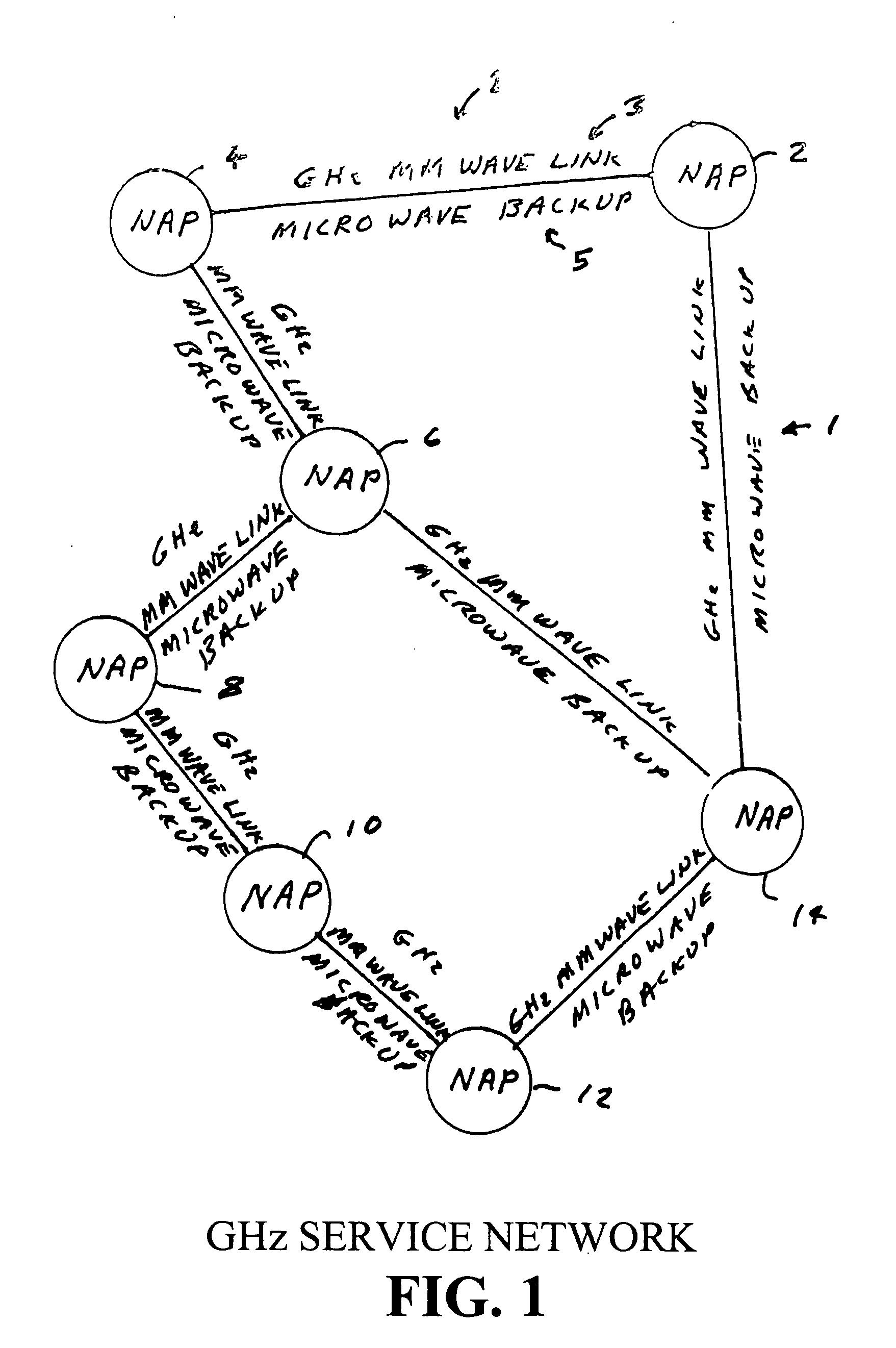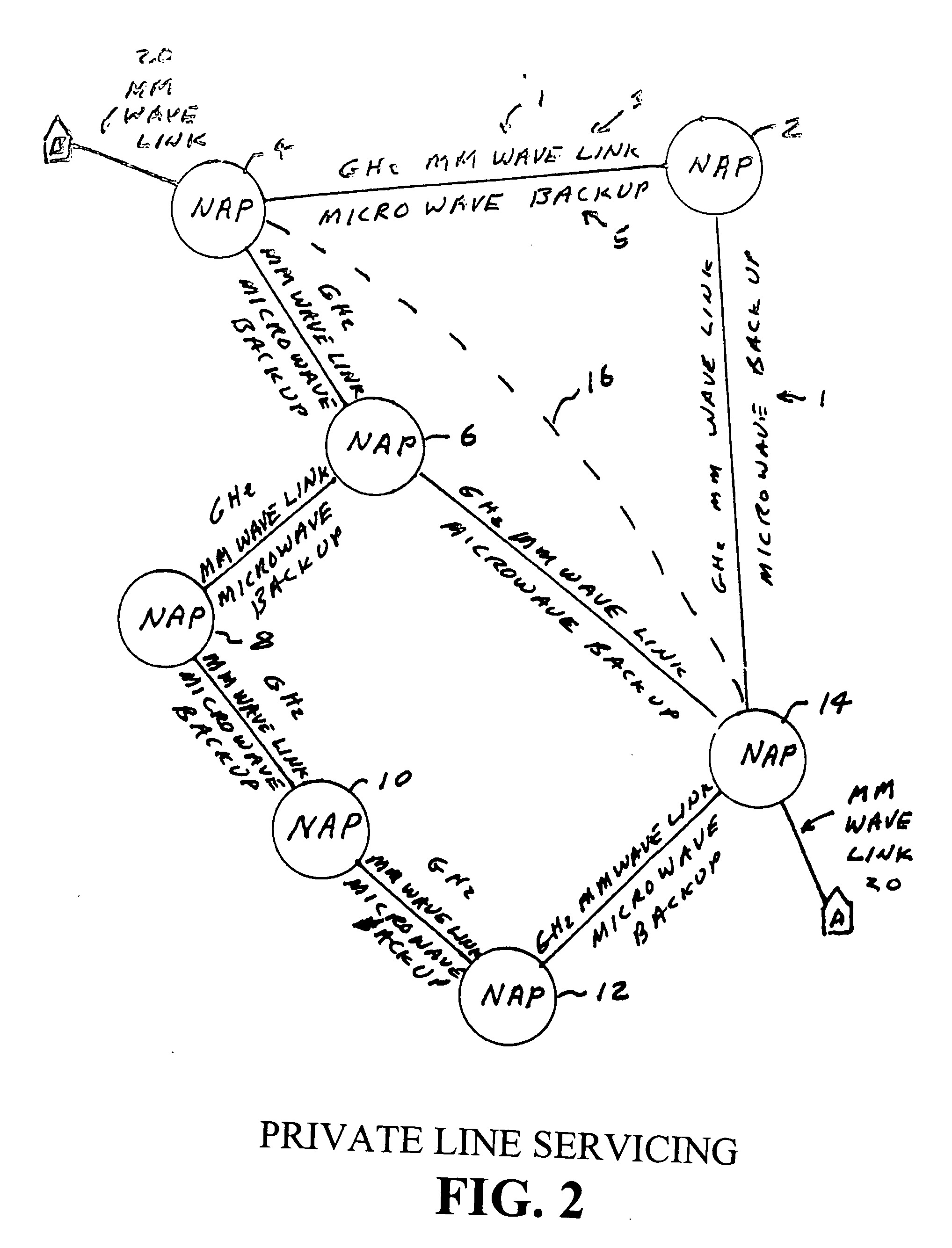Circuit switched millimeter wave communication network
a communication network and millimeter wave technology, applied in the field of communication networks, can solve the problems of not justifying the design and construction of fiber optic trunk lines can often take many months, and the cost of fiber optic trunk lines is high, and achieves high bandwidth, low latency middle-mile, and high-speed communication.
- Summary
- Abstract
- Description
- Claims
- Application Information
AI Technical Summary
Benefits of technology
Problems solved by technology
Method used
Image
Examples
Embodiment Construction
First Preferred Broad Band Network
[0053]FIG. 1 is a sketch of a prototype broadband communication network substantially similar to a network developed and operated by Applicants covering a 50 square kilometer region on the Island of Oahu in Hawaii. This prototype network includes seven network access points 2, 4, 6, 8, 10, 12, and 14 referred to by Applicants as “NAPs”. These NAPs are in radio communication with through six radio channels 1 each channel including a two-radio millimeter wave radio link 3 operating at 71-76 GHz and 81-86 GHz. The radios are Models L2710 available from Loea Corporation with offices in Honolulu, Hi. These radios support data rates of 1 Gbps for the Gigabit Ethernet standard which was developed for fiber optic communication. Each of the millimeter wave links has a microwave backup radio link 5 operating at frequencies in the range of about 11 GHz which automatically continues the communication in case the millimeter wave link is broken due to heavy rain ...
PUM
 Login to View More
Login to View More Abstract
Description
Claims
Application Information
 Login to View More
Login to View More - R&D
- Intellectual Property
- Life Sciences
- Materials
- Tech Scout
- Unparalleled Data Quality
- Higher Quality Content
- 60% Fewer Hallucinations
Browse by: Latest US Patents, China's latest patents, Technical Efficacy Thesaurus, Application Domain, Technology Topic, Popular Technical Reports.
© 2025 PatSnap. All rights reserved.Legal|Privacy policy|Modern Slavery Act Transparency Statement|Sitemap|About US| Contact US: help@patsnap.com



